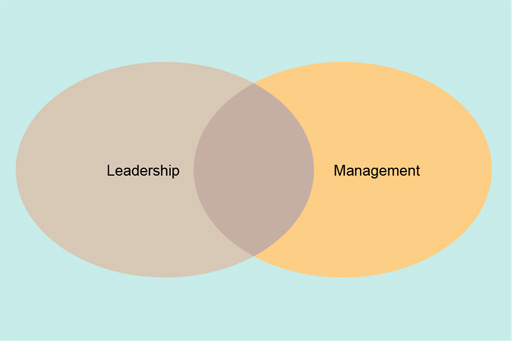1.3.1 The relationship between leadership and management
You come now to a perennial debate: is there a distinction between leadership and management?
One stereotype is that managers keep order and keep people working according to policies, rules and procedures set from above. Leaders, in contrast, take the initiative and help organisations, communities and societies to adapt to new requirements and conditions, if necessary confronting and destabilising established habits and routines. According to this view, someone in a management position can also be a leader, depending on how they go about things. But leaders can also be found in many other professional roles.
The following extract is taken from Leadership for Healthcare (Hartley and Benington, 2010).
Leadership or management?
It is not so long since everyone was arguing that ‘management’ was the answer to improving organisations, so why is there now a focus on leadership?
There are varied views about whether ‘management’ and ‘leadership’ are different or basically the same, as activities (not roles) within organisations. For example, Kotter (1990) argues that organisations need both leadership and management but that they are different: leadership is concerned with setting a direction for change, developing a vision for the future, while management consists of implementing those goals through planning, budgeting, staffing and so on. Kotter (1990) comments that most organisations are over-managed and under-led. The table below gives some commonly understood (though perhaps slightly caricatured) views of leadership activities compared with management activities, which some writers consider to be valid.
| Managers | Leaders |
|---|---|
| Are transactional | Are transformative |
| Seek to operate and maintain current systems | Seek to challenge and change systems |
| Accept given objectives and meanings | Create new visions and meanings |
| Control and monitor | Empower |
| Trade on exchange relationships | seek to inspire and transcend |
| have a short-term focus | Have long term focus |
| Focus on detail and procedure | Focus on the strategic big picture |
However, there is an alternative view that is also strongly held. Yukl (2006) argues that defining leadership and management as distinct roles, processes or relationships may obscure more than it reveals: ‘Most scholars seem to agree that success as a manager or an administrator in modern organisations necessarily involves leading’ (pp. 6–7). Many studies of leadership have been based on managers in any case, so clearly some managers can be assumed also to be leaders (although being a manager does not per se make one a leader). Mintzberg (1973) described leadership as a key managerial role. So managers are potentially leaders but they are not the only ones. Leadership is broader than management because it involves the use of influencing processes with a wide range of people, not just those who are in a relationship based on authority. It involves change but also can involve the routine; the transactional as well as the transformative.
The overlap, for many writers, between leadership and management is illustrated in the diagram below.
The debate about the relationship between management and leadership may in part be driven by the disciplinary interest of management theory, and the dominance of business schools in research and writing about leadership. Leadership analyses from different perspectives would pay as much attention to a variety of types of leadership in and around organisations. It is notable that the literature from healthcare specifically pays attention to medical leadership, clinical leadership and nurse leadership as well as to managerial leadership. Schools are interested in school leadership; police in police leadership.
Anyone who mobilises others for a purpose can be seen as a leader, and therefore the leadership is not just the top managers or senior experts such as, for example, consultants in a hospital. Nurses, occupational therapists, ward sisters and many others may, at particular times and in particular contexts, work in ways that exercise leadership. Expert leadership and professional leadership are as important as managerial leadership in public service settings.
Leadership is multifaceted. Understanding leadership requires an understanding of the relationship between the behaviours of individuals in leadership positions and those they seek to influence.

